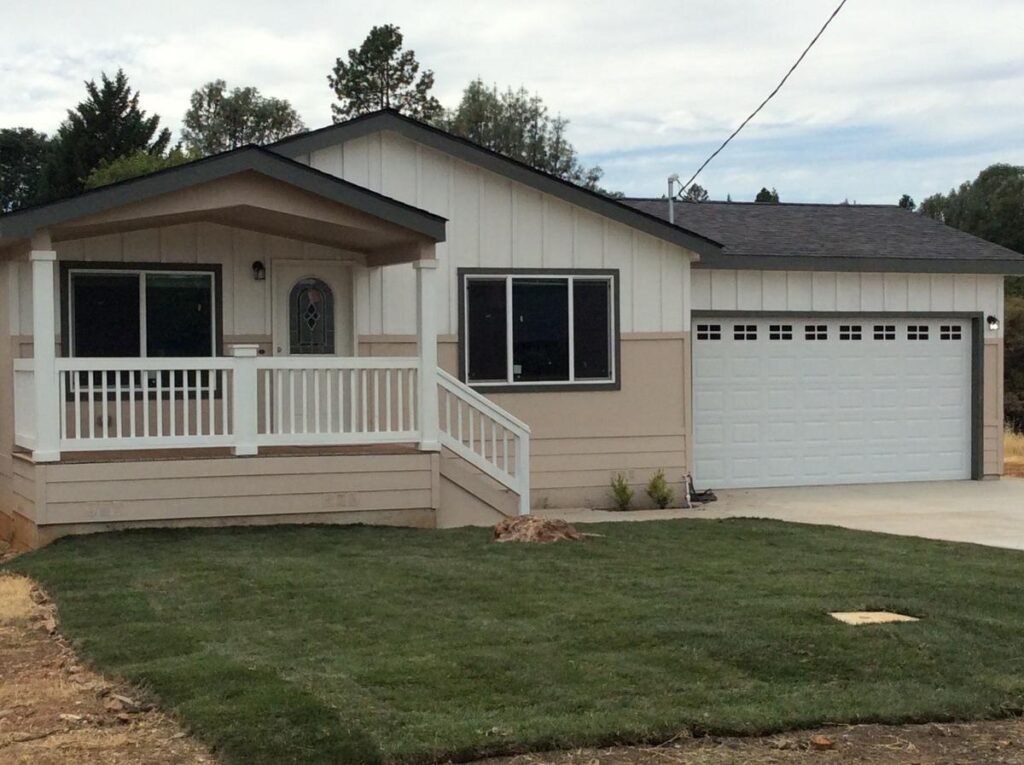
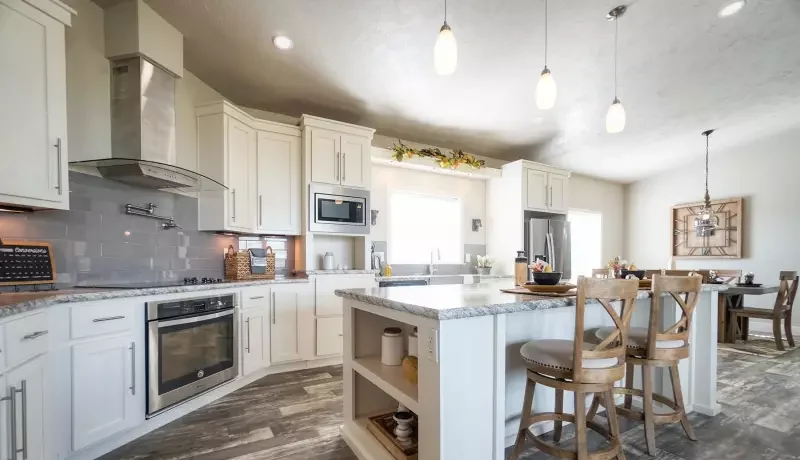
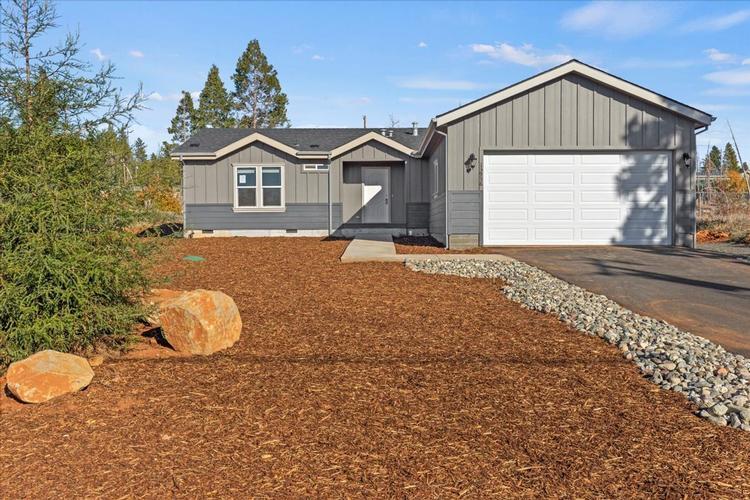
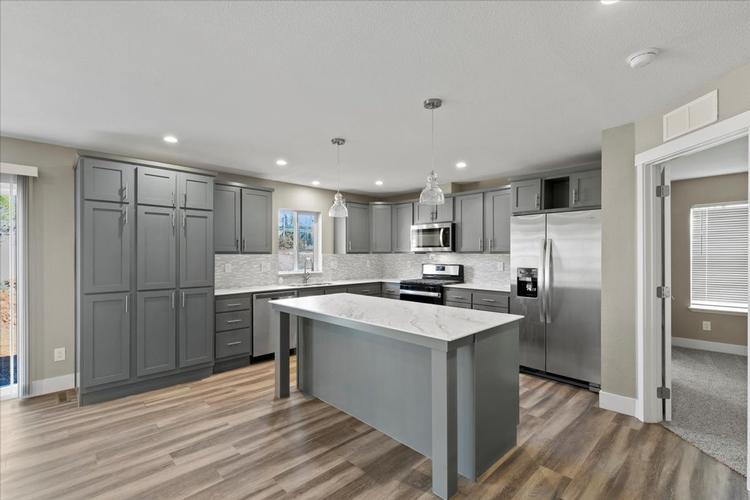
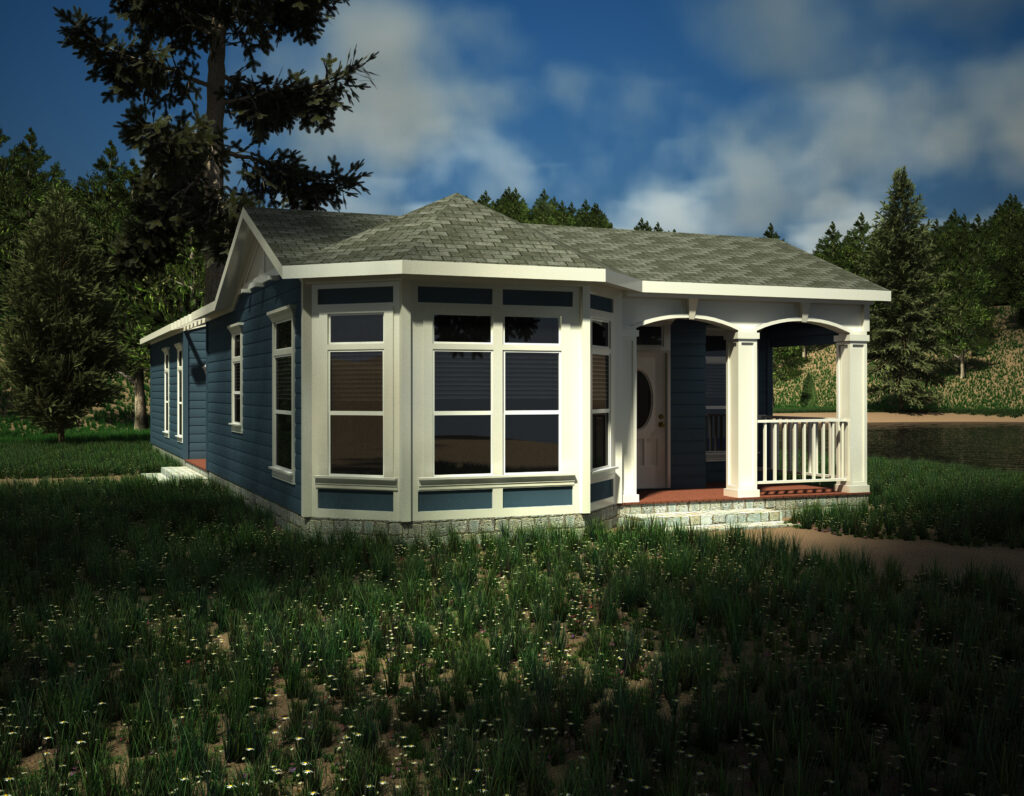
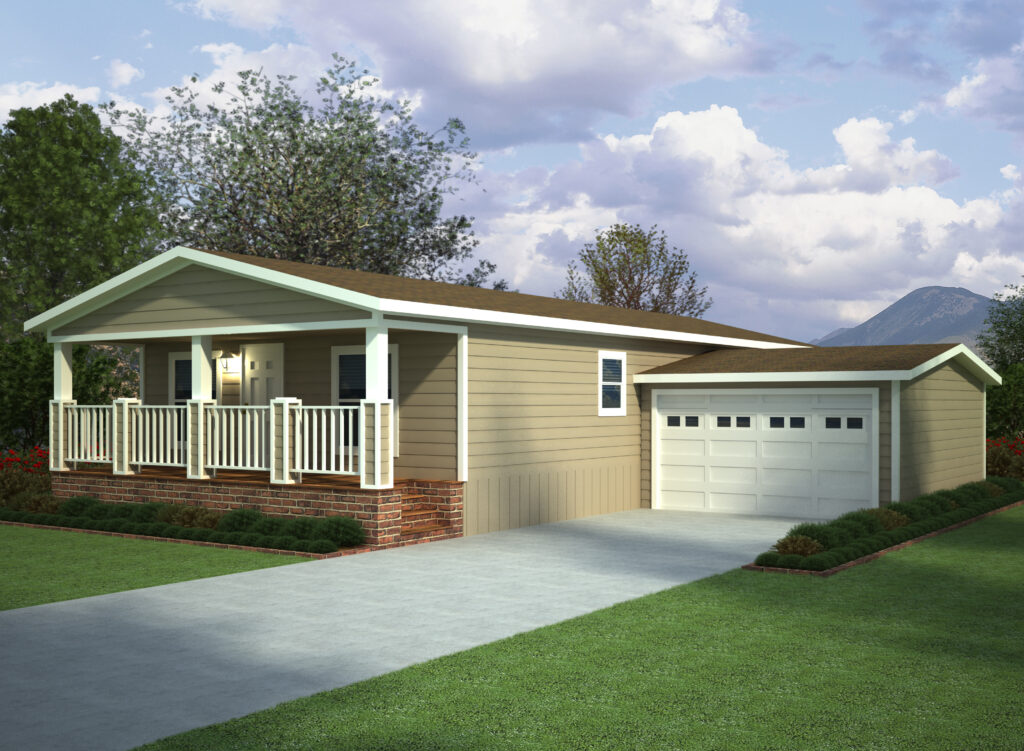
A manufactured home is built with almost all of the same materials as a site built home. The main differences are the frame for a manufactured home is built with 10″ or 12″ steel I-Beams that will remain on the home whether it is placed on a parcel you own or in a manufactured home community. The manufactured home is built to a federal building code that is regulated by HUD (Housing Urban Development).
A manufactured home is built as one or more sections in a factory setting. The homes should not exceed 16′ in height in order to go down most highways. This will limit the ceiling height and roof pitch. To save cost, a section of home can not exceed 14’11” in width including the eave. If the home section exceeds the 14’11” width it will require a Highway Patrol Escort in California (there are some exceptions).
Manufactured homes can be placed anywhere a home can be built as long as it meets the CC&R requirements. If there is a clause in the CC&R’s that states a manufactured home can not be placed in a neighborhood, that is no longer valid. A manufactured home can be placed on any lot in the United States as long as it can meet the design criteria for the neighborhood.
Benefits of A Manufactured Home:
Affordability
A manufactured home looks and feels just like a site built home, but costs much less! Each home is carefully constructed in a climate-controlled environment, with superior building materials from top suppliers. The result is a home of the highest quality at a price that can’t be beat. Our homes are constructed indoors, so we don’t experience weather-related delays and other cost increases associated with site-built construction.
Quality and Advances in Home Technology
In the last 10 to 15 years, there have been remarkable advances in Manufactured Housing technology. We’ve always stood for top-quality in our products and we are required by federal law to meet HUD standards. It is not simple to tell the difference between a manufactured home and a site-built home. There is a pre-conceived notion that manufactured homes are plain, boxy and rickety…but not the Manufactured Homes of today. We suggest you take a fresh look!
Market Value
Manufactured Homes follow market conditions just like site-built homes. They do not depreciate in value. The appreciation in value of manufactured homes comes back to the well known real estate axiom — location, location, location. With the proper site and maintenance, manufactured homes appreciate at the same rate as other homes in surrounding neighborhoods .
Energy Efficient
Manufactured Homes are significantly more energy efficient than the average site-built home. Federal standards, which were passed in 1992, require all newly-constructed manufactured homes to be very energy efficient. Manufactured Homes today save homeowners thousands of dollars annually in energy bills and they can also be built to meet “Energy Star” standards.
Financing
There are many financing options for Manufactured Homes, with up to 30-year terms and little or no down payments. Manufactured Homes qualify for most down payment assistance programs. Ask your lender about MH Advantage financing.
Differences Between Manufactured and Modular
What’s the difference?
Both manufactured and modular homes look like any other conventionally built home in appearance and both are built to codes that ensure a safe and sound investment. Here are the key differences.
Manufactured homes:
They are both built as either a single section home or a multi-section home, depending on the floor plan. They are constructed and delivered on a permanent steele frame, so a permanent foundation is not necessary. During your search, you’ll often find them referred to as “HUD homes.” Prior to the Federal Manufactured Home Construction Safety Standards, manufactured homes were sometimes called “mobile homes.” The HUD building code regulates the design, construction, transportability, fire resistance and energy efficiency of a home.
Modular homes:
While built in the factory and transported in sections, they are virtually no different from a site-built home. A modular home will take less time to build and they are more energy-efficient than their site-built rival. They are placed on a foundation, usually with a crane, and are subject to the same codes as any other site-built home, including all local, state and regional building codes.
Both manufactured and modular homes are inspected frequently at the manufacturing plant during each phase of construction. In-plant inspectors as well as independent agencies inspect the homes on behalf of federal, state and local governments for code compliance.